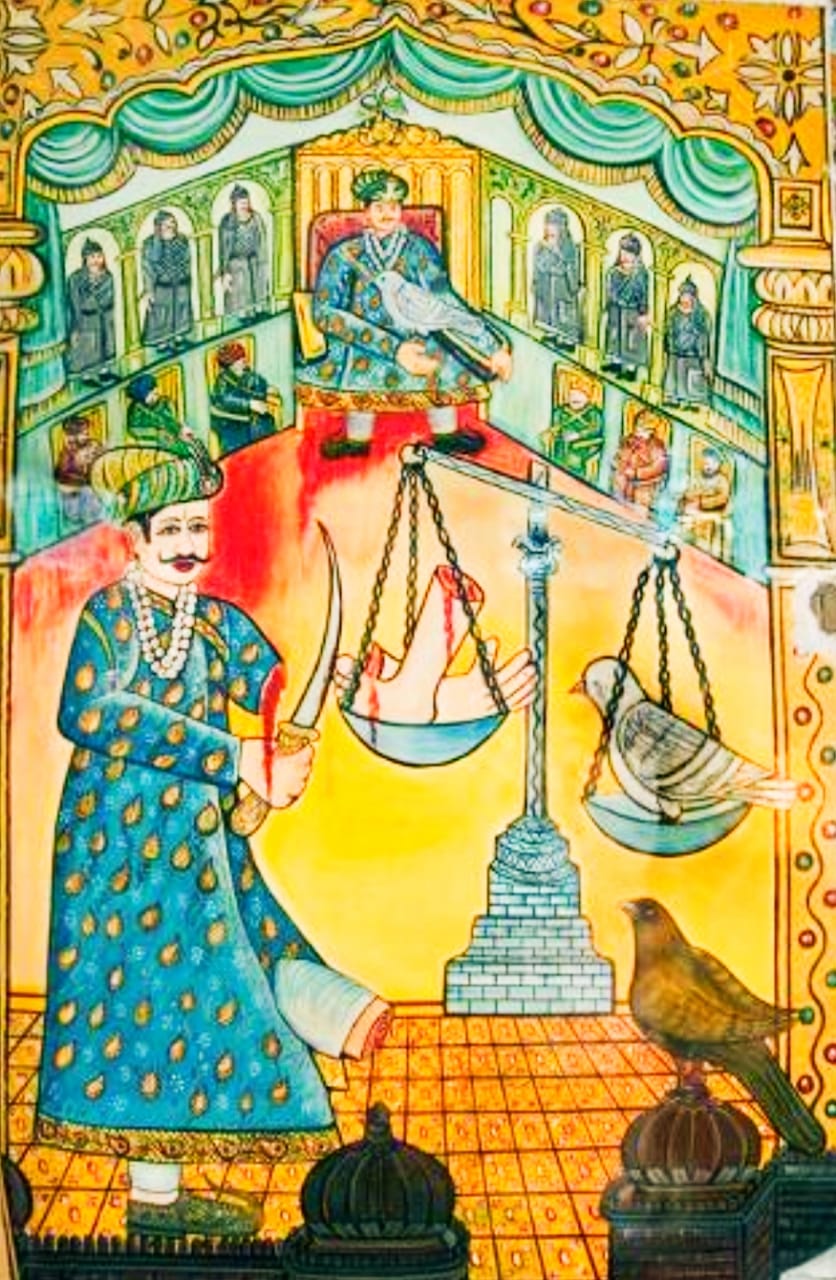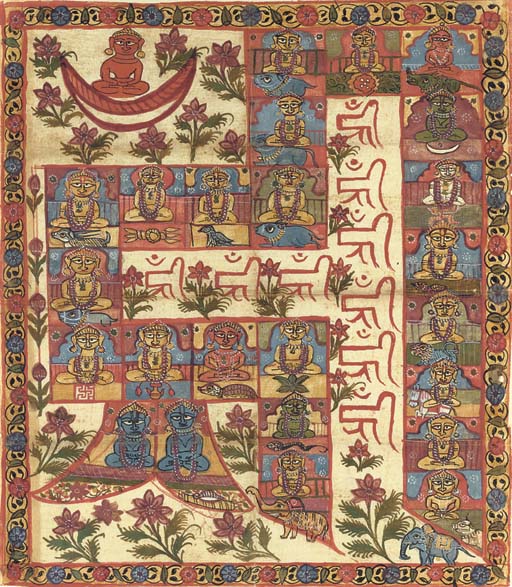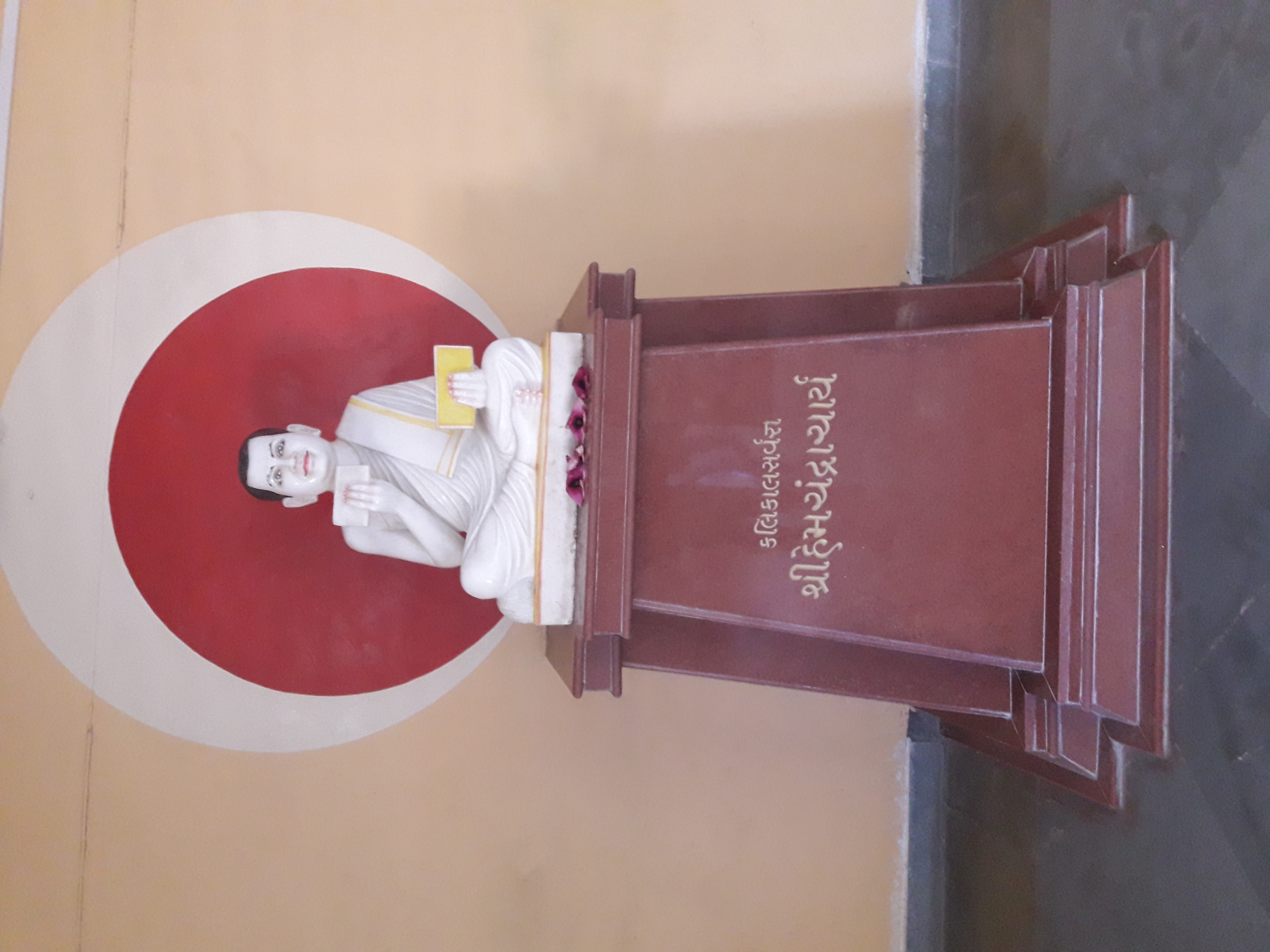|
Shantinatha
Shantinatha was the sixteenth Jain tirthankar of the present age (Avasarpini). Shantinatha was born to King Vishvasena and Queen Aiira at Hastinapur in the Ikshvaku dynasty. His birth date is the thirteenth day of the Jyest Krishna month of the Indian calendar. He was also a Chakravartin and a Kamadeva. He ascended to the throne when he was 25 years old. After over 25,000 years at the throne, he became a Jain monk and started his penance. According to Jain beliefs, he became a siddha, a liberated soul which has destroyed all of its karma. Biography in Jain tradition Shantinatha was the sixteenth Jain ''Tīrthankara'' of the 24 tirthankars of the present age ('' avasarpini''). Life before renunciation He was born to King Vishvasena and Queen Achira at Hastinapur on 13th day of Jestha Krishna in the Ikshvaku clan. Before the birth of Shantinatha, Queen Achira dreamt the sixteen most auspicious dreams. Shantinatha spent 25,000 years as a youth (''kumāra kāla'') and marri ... [...More Info...] [...Related Items...] OR: [Wikipedia] [Google] [Baidu] |
Ikshvaku Dynasty
The Solar dynasty (IAST: Suryavaṃśa or Ravivaṃśa in Sanskrit) or the Ikshvaku dynasty was founded by the legendary king Ikshvaku.Geography of Rigvedic India, M.L. Bhargava, Lucknow 1964, pp. 15-18, 46-49, 92-98, 100-/1, 136 The dynasty is also known as ("Solar dynasty" or "Descendants of the Sun") which means that this dynasty prays to the Sun as their God and their originator (the Gayatri Mantra is a prayer offered to the Sun God as the Sun is the main deity of the Solar Dynasty), and along with Lunar dynasty comprises one of the main lineages of the Kshatriya Varna. The first ''Tirthankara'' of Jainism, Rishabhdeva himself was King Ikshvaku. Further, 21 Tirthankaras of Jainism were born in this dynasty. According to Buddhist texts and tradition, Gautama Buddha descended from this dynasty. Many later kings of the Indian subcontinent claimed to be of Suryavamsha descent. The important personalities belonging to this royal house are Mandhatri, Muchukunda, Amba ... [...More Info...] [...Related Items...] OR: [Wikipedia] [Google] [Baidu] |
Salakapurusa
According to the Jain cosmology, the śalākapuruṣa ( sa, शलाकपुरूष) "illustrious or worthy persons" are 63 illustrious beings who appear during each half-time cycle. They are also known as the ''triṣaṣṭiśalākāpuruṣa'' (63 illustrious persons). The Jain universal or legendary history is a compilation of the deeds of these illustrious persons. Their life stories are said to be most inspiring. The ''śalākāpuruṣa'' comprise 24 ''Tirthankaras'' (Teaching Gods), twelve Chakravartin (universal monarchs, emperors of six continents), nine Balabhadras (gentle heroes), nine ''Narayanas'' (warrior heroes) and nine ''Prati-narayanas'' (anti-heroes). According to Jain cosmology, time is without beginning and eternal. The ''Kālacakra'', the cosmic wheel of time, rotates ceaselessly. The wheel of time is divided into two half-rotations, ''Utsarpiṇī'' or ascending time cycle and ''Avasarpiṇī'', the descending time cycle, occurring continuously after eac ... [...More Info...] [...Related Items...] OR: [Wikipedia] [Google] [Baidu] |
Tirthankara
In Jainism, a ''Tirthankara'' (Sanskrit: '; English language, English: literally a 'Ford (crossing), ford-maker') is a saviour and spiritual teacher of the ''Dharma (Jainism), dharma'' (righteous path). The word ''tirthankara'' signifies the founder of a ''Tirtha (Jainism), tirtha'', which is a fordable passage across the sea of interminable births and deaths, the ''Saṃsāra (Jainism), saṃsāra''. According to Jains, a ''Tirthankara'' is an individual who has conquered the ''saṃsāra'', the cycle of death and rebirth, on their own, and made a path for others to follow. After understanding the true nature of the self or soul, the ''Tīrthaṅkara'' attains ''Kevala Jnana'' (omniscience). Tirthankara provides a bridge for others to follow the new teacher from ''saṃsāra'' to ''moksha'' (liberation). In Jain cosmology, the wheel of time is divided in two halves, Utsarpiṇī' or ascending time cycle and ''avasarpiṇī'', the descending time cycle (said to be current no ... [...More Info...] [...Related Items...] OR: [Wikipedia] [Google] [Baidu] |
Dharmanatha
Dharmanatha was the fifteenth Jain Tirthankara of the present age (Avasarpini). According to Jain beliefs, he became a siddha, a liberated soul which has destroyed all of its karma. Dharmanath was born to King Bhanu Raja and Queen Suvrata Rani at Ratnapuri in the Ikshvaku dynasty. His birth date was the third day of the Magh Sukla month of the Indian calendar. Hutheesing Jain Temple, located at Ahmedabad in Gujarat, constructed in 1848 AD, is dedicated to him. Biography Dharmanatha was the fifteenth Tirthankara of the present age (Avasarpini) of Jainism. According to Jain beliefs, he became a siddha, a liberated soul which has destroyed all of its karma. His birth date was the 3rd day of the Magh Sukla month of the Indian calendar. He attained ''Moksha'' at Shikharji. Famous Temple * Hutheesing Jain Temple: best known Jain temple in Ahmedabad in Gujarat, India. It was constructed in 1848. * Dharmanath Jains Temple at Mattancherry, Kochi, Kerala Gallery Sheth_Hutheesinh ... [...More Info...] [...Related Items...] OR: [Wikipedia] [Google] [Baidu] |
Chakravartin
A ''chakravarti'' ( sa, चक्रवर्तिन्, ''cakravartin''; pi, cakkavatti; zh, 轉輪王, ''Zhuǎnlúnwáng'', "Wheel-Turning King"; , ''Zhuǎnlún Shèngwáng'', "Wheel-Turning Sacred King"; ja, 転輪王, ''Tenrin'ō'' or , ''Tenrinjōō'') is an ideal (or idealized) universal ruler, in the history, religion, and mythologies of India. The concept is present in the cultural traditions of Vedic, Hindu, Jain and Buddhist narrative myths and lore. There are three types of chakravarti: ''chakravala chakravarti'', a king who rules over all four of the continents (i.e., a universal monarch); ''dvipa chakravarti'', a ruler who governs only one of those continents; and ''pradesha chakravarti'', a monarch who leads the people of only a part of a continent, the equivalent of a local king. Dvipa chakravarti is particularly one who rules the entire Indian subcontinent (as in the case of the Maurya Empire, despite not conquering the southern kingdoms). The first ref ... [...More Info...] [...Related Items...] OR: [Wikipedia] [Google] [Baidu] |
Shikharji
Shri Sammet Shikharji () is a pilgrimage site in Giridih district, Jharkhand, India. It is located on Parasnath hill, the highest mountain in the state of Jharkhand. It is the most important Jain Tirtha (pilgrimage site) by both Digambara and Śvētāmbara, for it is the place where twenty of the twenty-four Jain tirthankaras along with many other monks attained Moksha. Etymology ''Shikharji'' means the "venerable peak". The site is also called Sammet Śikhar "peak of concentration." because it is a place where twenty of twenty-four Tirthankaras attained Moksha through meditation. The word "Parasnath" is derived from Parshvanatha, the twenty-third Jain Tirthankara, who was one of those who is believed to have attained Moksha at the site. Geography Shikarji is located in an inland part of rural east India. It lies on NH-2, the Delhi-Kolkata highway in a section called the Grand Trunk road Shikharji rises to making it the highest mountain in Jharkhand state. Jain tradi ... [...More Info...] [...Related Items...] OR: [Wikipedia] [Google] [Baidu] |
Tirthankara
In Jainism, a ''Tirthankara'' (Sanskrit: '; English language, English: literally a 'Ford (crossing), ford-maker') is a saviour and spiritual teacher of the ''Dharma (Jainism), dharma'' (righteous path). The word ''tirthankara'' signifies the founder of a ''Tirtha (Jainism), tirtha'', which is a fordable passage across the sea of interminable births and deaths, the ''Saṃsāra (Jainism), saṃsāra''. According to Jains, a ''Tirthankara'' is an individual who has conquered the ''saṃsāra'', the cycle of death and rebirth, on their own, and made a path for others to follow. After understanding the true nature of the self or soul, the ''Tīrthaṅkara'' attains ''Kevala Jnana'' (omniscience). Tirthankara provides a bridge for others to follow the new teacher from ''saṃsāra'' to ''moksha'' (liberation). In Jain cosmology, the wheel of time is divided in two halves, Utsarpiṇī' or ascending time cycle and ''avasarpiṇī'', the descending time cycle (said to be current no ... [...More Info...] [...Related Items...] OR: [Wikipedia] [Google] [Baidu] |
Kunthunatha
Kunthunath was the seventeenth Tirthankara, sixth Chakravartin and twelfth Kamadeva of the present half time cycle, Avasarpini. According to Jain beliefs, he became a siddha, liberated soul which has destroyed all of its karma. Kunthunatha was born to King Surya (Sura) and Queen Shridevi at Hastinapur in the Ikshvaku dynasty on the fourteenth day of the Vaishakh Krishna month of the Indian calendar. Etymology ''Kunthu'' means heap of Jewels. Life According to the Jain belief, he was born in 27,695,000 BC, Like all other Chakravartin, he also conquered all the lands and went to write his name on the foothills of mountains. Seeing the names of other Chakravartin already there, he saw his ambitions dwarfed. He then renounced his throne and became an ascetic for penance. At an age of 95,000 years he liberated his soul and attained Moksha on Mount Shikharji. Famous Temple * Prachin Bada Mandir, Hastinapur, Uttar Pradesh * Ganigitti Jain temple, Hampi * Kunthunath Temple at Jaisal ... [...More Info...] [...Related Items...] OR: [Wikipedia] [Google] [Baidu] |
Epilepsy
Epilepsy is a group of non-communicable neurological disorders characterized by recurrent epileptic seizures. Epileptic seizures can vary from brief and nearly undetectable periods to long periods of vigorous shaking due to abnormal electrical activity in the brain. These episodes can result in physical injuries, either directly such as broken bones or through causing accidents. In epilepsy, seizures tend to recur and may have no immediate underlying cause. Isolated seizures that are provoked by a specific cause such as poisoning are not deemed to represent epilepsy. People with epilepsy may be treated differently in various areas of the world and experience varying degrees of social stigma due to the alarming nature of their symptoms. The underlying mechanism of epileptic seizures is excessive and abnormal neuronal activity in the cortex of the brain which can be observed in the electroencephalogram (EEG) of an individual. The reason this occurs in most cases of epilepsy ... [...More Info...] [...Related Items...] OR: [Wikipedia] [Google] [Baidu] |
Hemachandra
Hemachandra was a 12th century () Indian Jain saint, scholar, poet, mathematician, philosopher, yogi, grammarian, law theorist, historian, lexicographer, rhetorician, logician, and prosodist. Noted as a prodigy by his contemporaries, he gained the title ''kalikālasarvajña'', "the knower of all knowledge in his times" and ''father of Gujarati language''. Born as Changadeva, he was ordained in the Śvētāmbara school of Jainism in 1110 and took the name Somachandra. In 1125 he became an adviser to King Kumarapala and wrote ''Arhanniti'', a work on politics from a Jain perspective. He also produced ''Trishashti-shalaka-purusha-charita'' (“Deeds of the 63 Illustrious Men”), a Sanskrit epic poem on the history of important figures of Jainism. Later in his life, he changed his name to Hemachandra. Early life Hemachandra was born in Dhandhuka, in present-day Gujarat, on Kartika Sud Purnima (the full moon day of Kartika month). His date of birth differs according to source ... [...More Info...] [...Related Items...] OR: [Wikipedia] [Google] [Baidu] |
Raja Dharma Mitra Offering Food To Tirthankara Shantinatha - Unknown, Rajasthan School - Google Cultural Institute
''Raja'' (; from , IAST ') is a royal title used for South Asian monarchs. The title is equivalent to king or princely ruler in South Asia and Southeast Asia. The title has a long history in South Asia and Southeast Asia, being attested from the Rigveda, where a ' is a ruler, see for example the ', the "Battle of Ten Kings". Raja-ruled Indian states While most of the Indian salute states (those granted a gun salute by the British Crown) were ruled by a Maharaja (or variation; some promoted from an earlier Raja- or equivalent style), even exclusively from 13 guns up, a number had Rajas: ; Hereditary salutes of 11-guns : * the Raja of Pindrawal * the Raja of Morni * the Raja of Rajouri * the Raja of Ali Rajpur * the Raja of Bilaspur * the Raja of Chamba * the Raja of Faridkot * the Raja of Jhabua * the Raja of Mandi * the Raja of Manipur * the Raja of Narsinghgarh * the Raja of Pudukkottai * the Raja of Rajgarh * the Raja of Sangli * the Raja of Sailana * the ... [...More Info...] [...Related Items...] OR: [Wikipedia] [Google] [Baidu] |
Pausha
Pausha ( sa, पौष ; hi, पूस ; ta, தை ), also called Paush, Poush, Pausa or Pushya, is the tenth month of the Hindu calendar, corresponding with December/January of the Gregorian calendar. In the Indian national calendar, Pausha is also the tenth month of the year, beginning on 21 December and ending on 19 January. In the Hindu lunisolar calendar, Pausha begins with either the full or new moon in December. Since the traditional Hindu calendar follows the lunar cycle, Pausha's start and end dates vary from year to year, unlike the months of the Hindu solar calendars. Pausha is a winter (Hemant and Shishir Ritu) month. The lunar month of Pausha overlaps with the solar month of Dhanu. Events Pausa Bahula Amavasya day is celebrated as Theppotsavam (float festival) at Sri Varaha Lakshmi Narasimha Swamyvari Temple in Simhachalam. The ''Utsava'' idols are taken in a palanquin to ''Varaha Pushkarini''. See also * Astronomical basis of the Hindu calendar *Hindu un ... [...More Info...] [...Related Items...] OR: [Wikipedia] [Google] [Baidu] |








